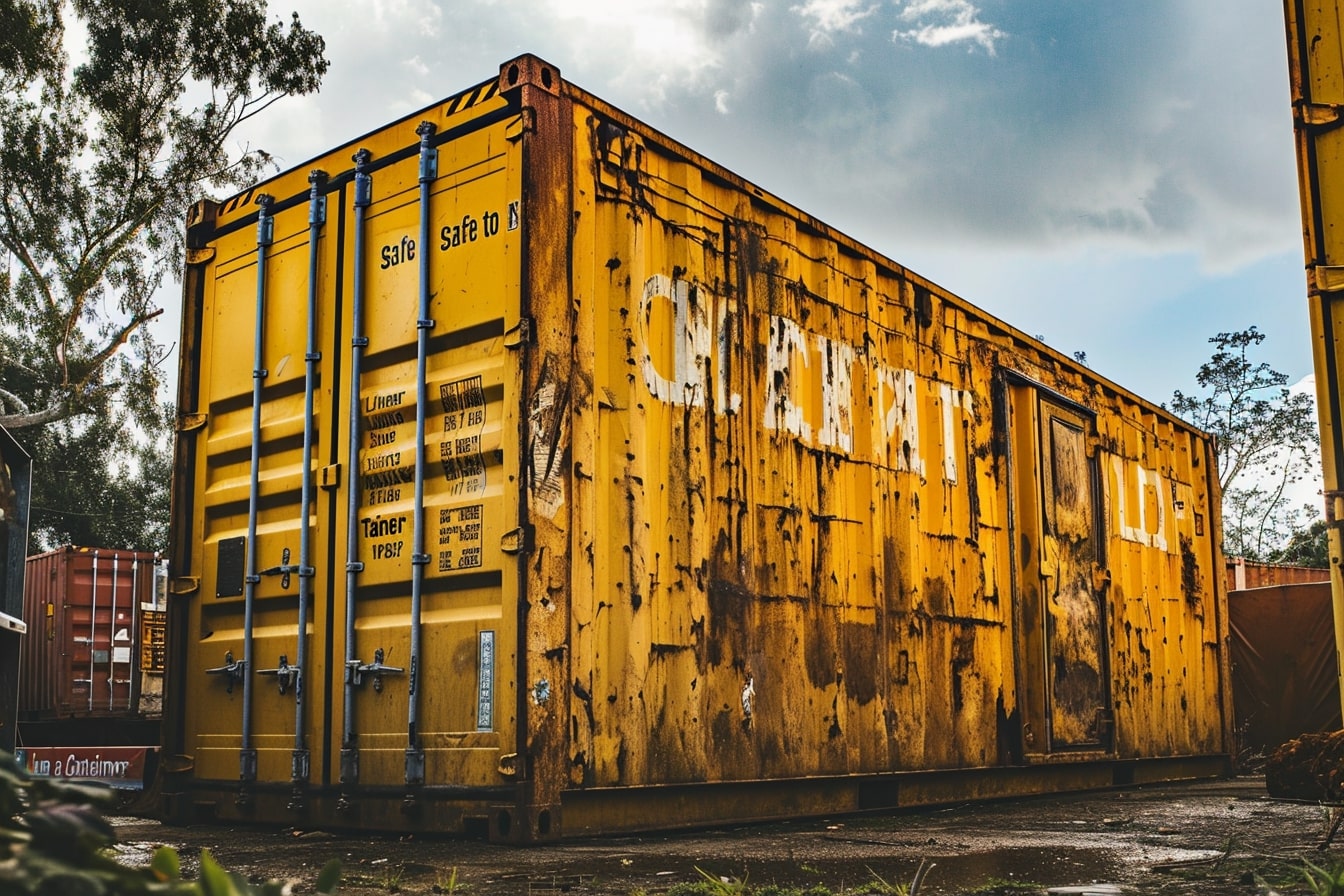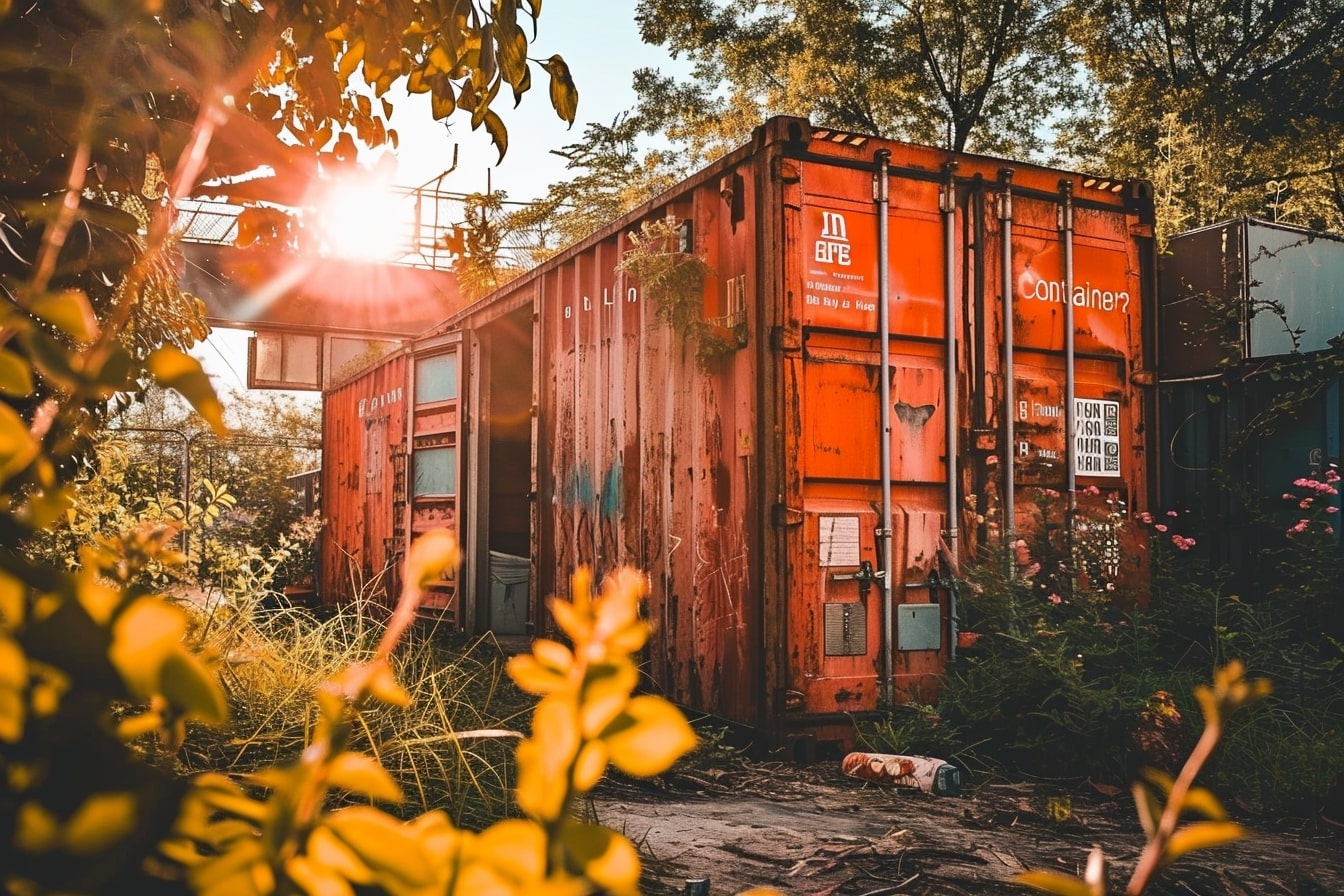Imagine living in a modern, budget-friendly home constructed from steel shipping containers – a reality for several bold and creative homeowners worldwide.
Given the increasing trend of container homes, understanding potential issues such as rusting becomes crucial. Constructed primarily from steel, these homes, if left unprotected, can bare the brunt of nature’s elements, particularly rust.
This write up aims to demonstrate the science behind rust formation on steel, and how it can impact the aesthetic value and the structural integrity of your container home. We will also delve into how the rusting process can be prevented and managed, ensuring that your home is not only environmentally friendly but also durable.
Understanding Container Materials
The Durable World of Container Homes: Built to Last
As we take a deep dive into our hobby of exploring different types of homes, have you ever considered living in a container home?
There is an increasing trend towards container homes, predominantly due to their resilience, durability, longevity and sustainability. These aren’t just fancy terms thrown around in the industry. Each word carefully describes the wonderful qualities of a container home, making it an inviting alternative to the traditional brick-and-mortar abode.
The core component of a container home, as suggested by the name, is essentially a used or brand new steel shipping container. These are the sturdy containers you’ve seen stacked on freight ships, at ports, or on the back of eighteen wheelers. Shaped like giant rectangles, they’re pre-fabricated and designed to withstand harsh conditions, significant weight, and long travel times which means they’re built for longevity.
One might question, how long do they really last? The answer lies in the core material used for construction – steel. It’s sturdy, robust and incredibly durable. Standard containers are known to last 25 years or more with minimal maintenance. However, certain factors can significantly affect their lifespan.
Climate plays a significant role in the longevity of these steel homes. Areas with high humidity or salinity might accelerate the rate of corrosion, whereas, regions with low humidity and milder temperatures can extend a container’s longevity. Properly insulating the container can regulate the temperature inside, aiding in the management of these exterior factors.
Usage and maintenance also govern container longevity. Treating it with anti-corrosive paints and regularly checking for any signs of rust are key to ensuring its longevity.
You also have the option of renovating or weatherproofing your container homes which extends their lifespan significantly. With weatherproofing, you not only counter the harsh elements but also reduce energy consumption, control interior climate and improve air quality.
In short, the lifespan of a container home largely depends on its maintenance, the quality of the container chosen, and the local climate. With good care and attention, your little steel sanctuary can easily surpass the longevity of conventional homes, all while offering a unique, modern, and efficient take on “home sweet home”. The potential of these container homes is vast, just as our hobby here; discovering, exploring, and appreciating the myriad types of dwellings our world has to offer.

The Rusting Process
Understanding Rust on Steel Surfaces: A Closer Look
Metals, especially steel, are utilized in numerous applications, homes made from steel shipping containers being a notable example. Some significant aspects have been touched on their resilience, the part climate plays, and the methods to protect these structures. Now let’s dive a little into the science behind a common problem that can trouble the enthusiasts of this unconventional dwelling style – rust.
To understand rust, it’s critical to comprehend that it is not a stain or grime that can be washed away, but a phenomenon commonly known as oxidation. When the steel comes into contact with water and oxygen, a chemical reaction transpires that converts the steel surface into a brittle, flaky substance that we identify as rust.
So, how does this occur, especially on steel?
At the heart of it all is iron, which is a predominant constituent of steel. The process begins when both Oxygen (from the air) and Hydrogen (from water) interact with the iron present in the steel. The interaction results in the formation of Hydrated Iron (III) Oxide, the scientific term for rust.
In simple terms, it’s like a snack exchange at a party where Hydrogen grabs an electron snack from iron, then immediately hands it over to oxygen, who really craves it. Once oxygen gets its fill of electron snacks, it transforms, along with iron and water, into Hydrated Iron (III) Oxide, a fancy name that means those flaky, reddish-brown layers commonly seen on old steel surfaces. The resultant rust not only affects the aesthetic charm of the structure but also can influence its structural integrity over time.
This oxidation process is a natural phenomenon and will occur on any exposed steel surface given adequate time. Moisture and salinity, which accelerate the rusting process, are two prominent factors. This might prove to be a concern for shipping containers situated in coastal areas or regions of high humidity.
Tackling this rust issue, especially for your container home, is quite simple.
Utilize anti-corrosive treatments as periodic maintenance and consider additional weatherproofing steps based on your local climate. Regular inspection for early signs of rust and prompt action will help keep your container home in a prime condition.
It’s important to remember that rust is an intrinsic part of steel’s life, but with the right interventions, it’s manageable. Understanding the cause of rust allows us to appreciate the delicate balance between the resourceful use of these industrial marvels and the raw elements of Mother Nature. After all, even the highest quality steel needs a little care to overcome its arch-nemesis, rust.

Preventing and Managing Rust
Living in a container home involves not only adaptability but also the constant challenge of managing rust. Navigating the world of container homes, rust is a snag that everyone has to learn to deal with. This part of the article delves into practical methods for preventing and managing rust in a container home.
Every container home enthusiast should note that proper design and planning can be vital in rust prevention. When designing your container home, make sure to consider airflow and water movement. Features like sloped roofs, correctly positioned gutters, and adequately placed downspouts can help move water away from the container surface, preventing standing water that could accelerate rusting.
Furthermore, proper sealing of openings and joints is vital. Container modifications often involve making cuts for windows, doors, or vents. Every cut or weld mark exposes fresh metal, thereby increasing the rust potential. Sealants like silicone or polyurethane offer excellent protection to these vulnerable areas, thoroughly covering the exposed metal and helping prevent oxidation.
One tried-and-true method against corrosion is paint.
A high-quality, rust-inhibiting paint is a simple and efficient way to create a shield against rust. Applied over a rust-inhibiting primer, this type of paint forms an effective barrier against the elements, blocking moisture and oxygen from reaching the metal surface.
Another powerful rust prevention material you might consider is marine-grade epoxy. It’s an incredibly durable and protective coating that withstands harsh weather conditions, making it ideal for container home exteriors.
Utilizing the benefit of technology, you can consider the use of dehumidifiers, especially in humid climates. These devices can help maintain optimal humidity levels within the home, preventing excess moisture that could lead to rusting.
For existing rust, manual methods are the first line of defense, typically employing a wire brush or sandpaper to physically remove the oxide layer. Following up with a rust conversion treatment can transform rust into a paint-acceptable surface, stalling further oxidation.
Presenting more aggressive measures, sandblasting is used to eliminate rust by forcibly propelling a stream of abrasive material against the rusted surface. Once the rust is entirely removed, the clean surface is coated with a rust-proof paint or sealer.
In conclusion, it is not about completely eliminating rust, which is a natural occurrence, but about understanding and managing it. A proactive approach to rust prevention can keep your container home in top shape for years. And remember, there’s nothing like regular inspection to catch rust in its early stages! So embrace your cool, innovative home, roll up your sleeves, and you’ll have all the rust in hand and under control before you know it!

Impacts of Rust on Container Homes
Diving right into the nitty-gritty, let’s extend our discussion on the resilience of container homes to a hot topic – rust and it’s implications. With containers being crafted from steel, they are susceptible to rust. Nathless, much like a faithful chess player eying the king, we can mitigate this problem with the right moves.
Let’s break down the phenomenon of rust – fundamentally a chemical reaction called oxidation. It occurs when iron, water, and oxygen cross paths, leading to rust tendrils on steel surfaces. Adding accelerators like moisture, salinity, or even a sheath of poor-quality paint quickens the rusting process. Not only is rust unsightly, uninvited resident marring the aesthetic charm of your steel fortress, but it also poses a real threat to structural integrity.
Now, don’t be disheartened, all is not lost! Armed with information and a bit of elbow grease, rust can be tackled head-on. Begin with regular inspections; rust will seldom live in your shadows if you keep an enlightened eye on your steel structures.
A deliberate approach to design and planning is paramount to rust prevention. Factors like ensuring proper airflow, meticulous water management are pivotal. Think of the imperfections in your container like knights on a chessboard – they move in unexpected ways, and if neglected, potentiate the onset of rust.
The worth of sealing openings and joints in the prevention of rust cannot be underestimated. Every breach in a container provides an ingress for water and moisture, again kicking off that unwanted oxidation process. A sound container home strategy involves nip in the bud right here.
While on the topic of preventative measures, let’s not forget our friends – rust-inhibiting paint and primers. They are much like the pawns in our chess game of rust prevention; humble but vital. Not only do they provide an aesthetic finish, but they also form a protective barrier against rust.
How about taking a hint from the sailors, and consider marine-grade epoxy?
This substance has been protecting ships from grave rusting for ages, and it’s sure to work just as well with your container homes.
You might also want to introduce a dehumidifier to your strategy. Offering dual benefits, a dehumidifier helps maintain optimal humidity levels, enhancing your overall living comfort while simultaneously warding off rust.
Should rust manage to infringe upon your container, manual methods like wire brushing or sandpapering have proven to be effective at rust removal. It’s a slightly strenuous physical endeavor, yet very rewarding.
Another rust combatant in our armory is rust conversion treatments. These products actually convert rust into a paint-acceptable surface. Consider it a pawn promotion in our chess analogy.
Finally, for those seeking an aggressive approach, sandblasting is a viable option to completely remove rust and prepare the surface for priming and painting. Just remember, like a queen-side castle, this move requires some groundwork.
Maintaining a vibrant container home demands a keen eye, timely action, and enthusiastic involvement. However, remain not daunted! With these strategies, you are now equipped to play the game. Remember, while rust is a formidable opponent, we are the masters of our container home domain, one clever move at a time.

As we navigate the world of container homes, it’s essential to acknowledge that while rust is a potential concern, it is far from a crippling one. Much like any other property, regular attention and appropriate countermeasures can swiftly combat this issue.
Knowing how rust forms and how it can affect these steel structures is half the battle won. The use of specific paints and coatings, together with careful container selection and periodic maintenance, can assure a long-lasting, stable, and visually appealing abode.
So, even though container homes are susceptible to rust, given the right conditions, planning and knowledge can easily turn these trendy and sustainable houses into a rust-free reality.
